Written by Margaret Sessa-Hawkins and Fiona Dobson
Reading about the environment can sometimes seem like a depressing litany of fading species, increased development, and a warming planet. But there are reasons to be hopeful, too. As we enter the new year, here are 12 conservation wins we saw in 2018.

The Rudong mudflats, in China’s Jiangsu Province, a crucial site for shorebirds. Image credit Richard Allen.
January – China Halts Coastal Land Reclamation
2018 began with an unexpected bang when in January, China announced it was to halt all ‘business-related’ land reclamation along its coast. The change meant China would nationalize any coastal land that had not yet been built on, and would stop approving development plans unless they were key to national infrastructure, public welfare, or defense. The policy change, if consistently implemented, is incredibly good news for globally threatened coastal birds such as the critically endangered spoon-billed sandpiper (Calidris pygmaea) and endangered great knot (Calidris tenuirostris), both of whom rest along China’s coasts during migration.
February – New breeding ground for white-winged flufftail
The white-winged flufftail (Sarothrura ayresi) is an incredibly elusive and rare bird; we estimate there are between 50 and 250 individuals left in the wild. Previously thought to only breed in Ethiopia, a new video technology developed by BirdLife South Africa found that the bird was also breeding in South Africa’s Middlepunt Wetland. Later in the year, BirdLife South Africa also identified the call of the flufftail – another first. All these advances in knowledge about the flufftail’s habitat and behavior will help conservationists to protect the species in years to come.
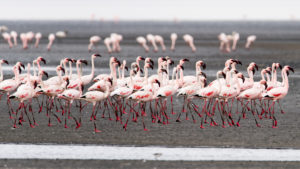
Flamingos at Lake Natron. Image credit Christoph Strässler, CC BY-SA 3.0.
March – Flamingo breeding ground Lake Natron saved
Tanzania’s Lake Natron is the most significant breeding site for lesser flamingos (Phoeniconaias minor). Unfortunately, the lake was under threat from plans to build a soda ash factory at the site. However, in March the Tanzanian government announced it had abandoned those plans due to the threat they could pose to the flamingos. Plans for the lake are now turning toward ecotourism, which has the potential to both bring in revenue and keep Lake Natron as the ‘it’ spot for flamingos for years to come.
April – Record numbers of blue-throated macaws spotted
April brought good news reported about a critically endangered Bolivan endemic bird species, the blue-throated macaw (Ara glaucogularis). Results of a survey of the Barba Azul Nature Reserve conducted by Armonia (BirdLife in Bolivia) a few months prior were finalized, revealing that 155 individuals had been spotted. That may not sound like much, but it’s a record for the bird in modern times, after the species was decimated in the 1980s by trapping to meet demand for the wild bird trade. These encouraging numbers show that our partner’s conservation efforts, including habitat protection and nest boxes, are paying off.
May – The birds conservation has saved
Published in May, BirdLife’s State of the World’s Birds report showed one in eight bird species are in danger of extinction. But the report also revealed tangible evidence that, when put into place, conservation actions can and do work. At least 25 species have been saved from being critically endangered since 2000, the report found, including the Azores bullfinch (Pyrrhula murina), who came back from just 40 individuals, and the yellow-eared parrot (Ognorhynchus icterotis), who were saved partially by a massive publicity campaign.
June – Christmas Island saved from mining
It was an early Christmas present when Australia’s Federal Environment Minister, Josh Frydenberg, announced that he was rejecting an application for the expansion of phosphate mining on Australia’s Christmas Island. The island’s rainforests support the last remaining breeding colony of Abbott’s boobies (Papasula abbotti), and it’s also where the world’s rarest frigatebirds, Christmas frigatebirds (Fregata andrewsi), build their nests.
July – Malawi upholds plastic ban
Although Malawi introduced a ban on thin plastics in June of 2015, it was challenged in court by plastics manufacturers. In July of this year though, a judge announced that the ban would be upheld, meaning thin plastics are now officially banned in Malawi. Dr. Tiwonge Ivy of WESM (BirdLife in Malawi) said that plastics had become an environmental hazard in the country, blocking storm drains and being ingested by livestock and wildlife alike.
August – Black-tailed godwit rebounding in Sweden
After a decade of conservation efforts, the black-tailed godwit (Limosa limosa) appears to be making a recovery in Sweden. Although widespread globally, the bird’s numbers have been dropping drastically in certain parts of their range. The cause may be earlier mowing dates in industrial farming, which is disturbing their breeding season. In Sweden, a plan between local authorities, farmers, hunters and NGOs to sustainably manage wet grasslands has led to breeding success for the godwit, meaning decades of decline for the bird in the country are reversing.
September – Roseate terns making a comeback
There was good news for one of Europe’s rarer breeding birds in September. Following an European Union funded Roseate Tern LIFE recovery project between the RSPB (BirdLife in the UK), BirdWatch Ireland (BirdLife Partner) and the North Wales Wildlife Trust at breeding locations in the British Isles, a record 1,980 pairs of roseate tern (Sterna dougallii) were counted. The project involved building nest boxes and terraces for the terns to roost on and using ‘gull-scarers’ and lasers to deter larger gulls from preying on the terns’ nests.
October – New conservation area in Singapore
One of Singapore’s last remaining mangrove habitats has been designated a new protected area – great news for birds migrating along the East Asian-Australasian Flyway. Stopover sites along this flyway, including in China, Singapore and Australia, are becoming scarce amid developments and human population pressures. This new protected area, part of the Kranji-Mandai Important Bird and Biodiversity Area (IBA), will be vital for globally threatened birds such as Chinese egrets (Egretta eulophotes) and straw-headed bulbuls (Pycnonotus zeylanicus) who need to refuel and rest in the midst of their long migrations. The protection of the 70 hectare area of coastal mudflats and mangroves will not only support bird populations, but will be open to visitors to facilitate research and education activities, and will help to raise the profile of this important habitat in Singapore and across the flyway.
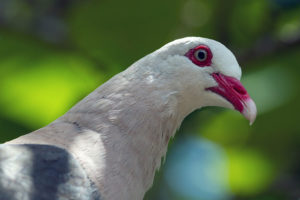
A pink pigeon. Image credit Travelpics…, CC BY-SA 3.0.
November – Red List
BirdLife is the avian authority for the International Union for Conservation of Nature (IUCN) Red List, and as such we perform yearly assessments on the extinction risks of the world’s bird species. This year’s update demonstrated the powerful potential of conservation to bring about change. Key success stories include the downlisting of both Northern bald ibis (Geronticus eremita) and pink pigeon (Nesoenas mayeri). Once numbering less than 60 pairs in the wild, the Northern bald ibis was previously listed as critically endangered, the highest possible threat category and last stop before extinction. Thanks to collaborative conservation efforts, which included efforts from BirdLife Partners such as GREPOM (BirdLife in Morocco), this species has been downlisted to endangered. It’s by no means out of the woods yet, but this downlisting shows that conservation efforts are having a real effect. The pink pigeon’s reclassification from endangered to vulnerable is also testimony to the power of conservation, with populations stabilizing in the wild.
December – Chinese crested terns
There is cause for celebration for the Chinese crested tern (Thalasseus bernsteini), whose breeding success in a new colony off the Southwest coast of South Korea has sparked great excitement. Thought to be extinct until 2000, these gregarious birds rely on large colonies to breed, and have struggled with disturbances to their nesting habitat. Conservationists have worked tirelessly to bolster the new Korean colony, using social attraction techniques such as model birds and even call-playback systems. The birds seem to love their fake friends, and a new generation is bringing the colony back from the brink. Birdwatchers in the Philippines and Japan have also glimpsed these special birds on their mysterious migration route, and there are hopes that sightings of Asia’s rarest seabird could become more common in the future.
Featured image: A Northern bald ibis. This species once numbered fewer than 60 pairs left in the wild, but thanks to conservation efforts, they were downlisted from critically endangered to endangered in 2018. Image credit Cloudtail the Snow Leopard, CC BY-SA 3.0.

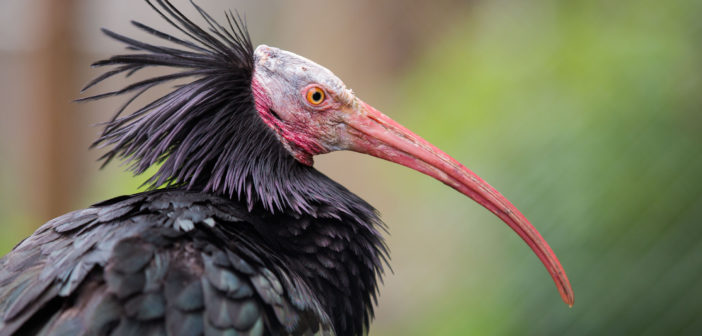
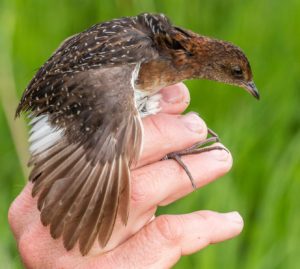

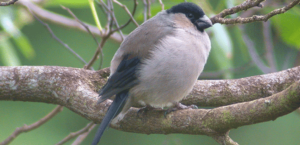
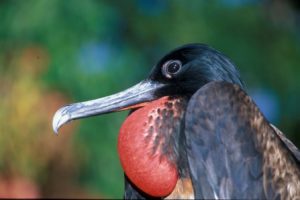

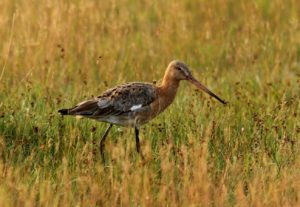


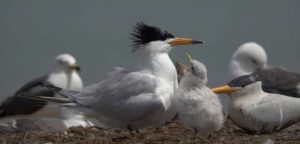




1 Comment
Please investigate the pelicans dying in Austrailia from toxic runoff. Tragic.